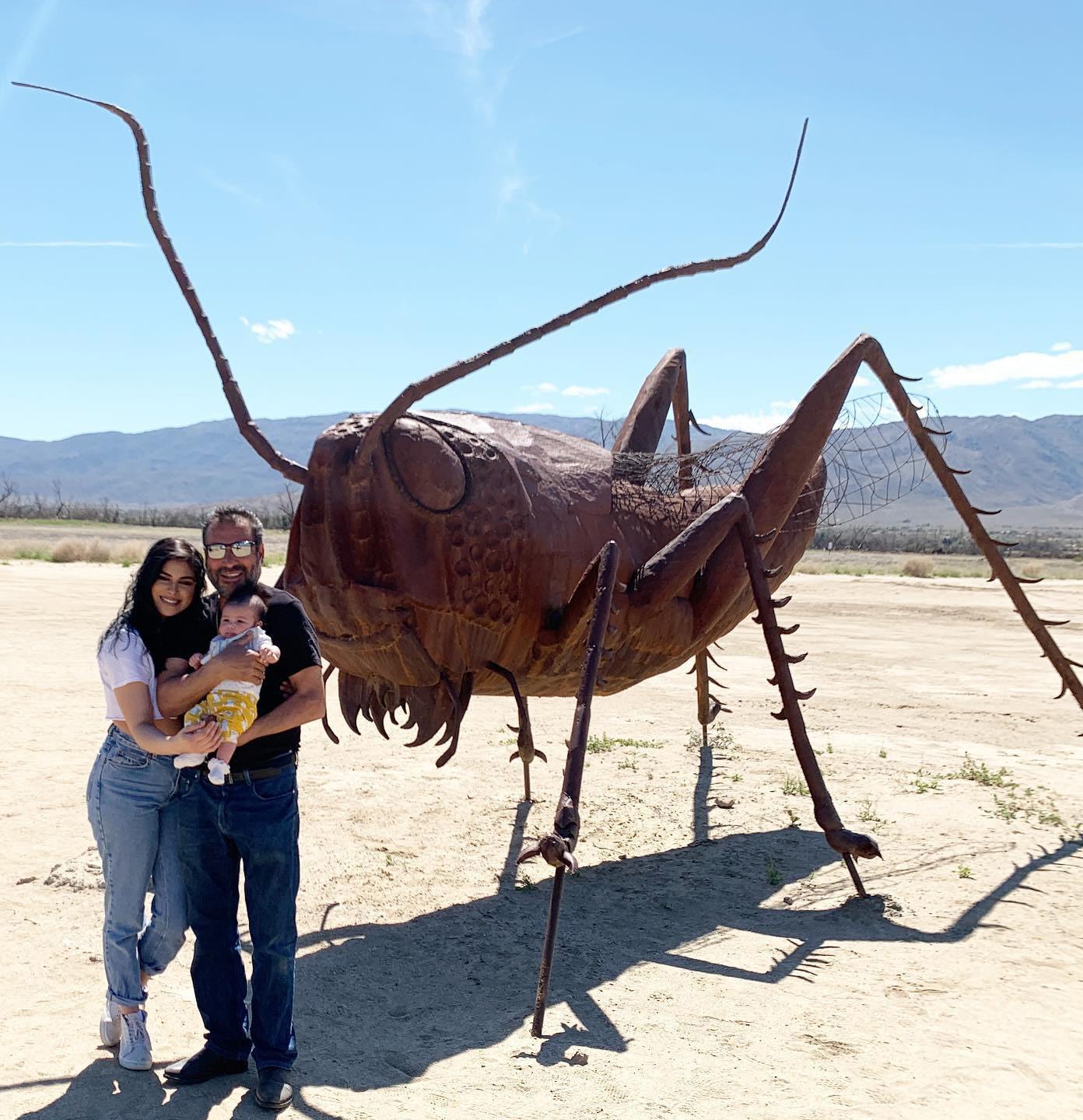
24 minute read
THE LIFE
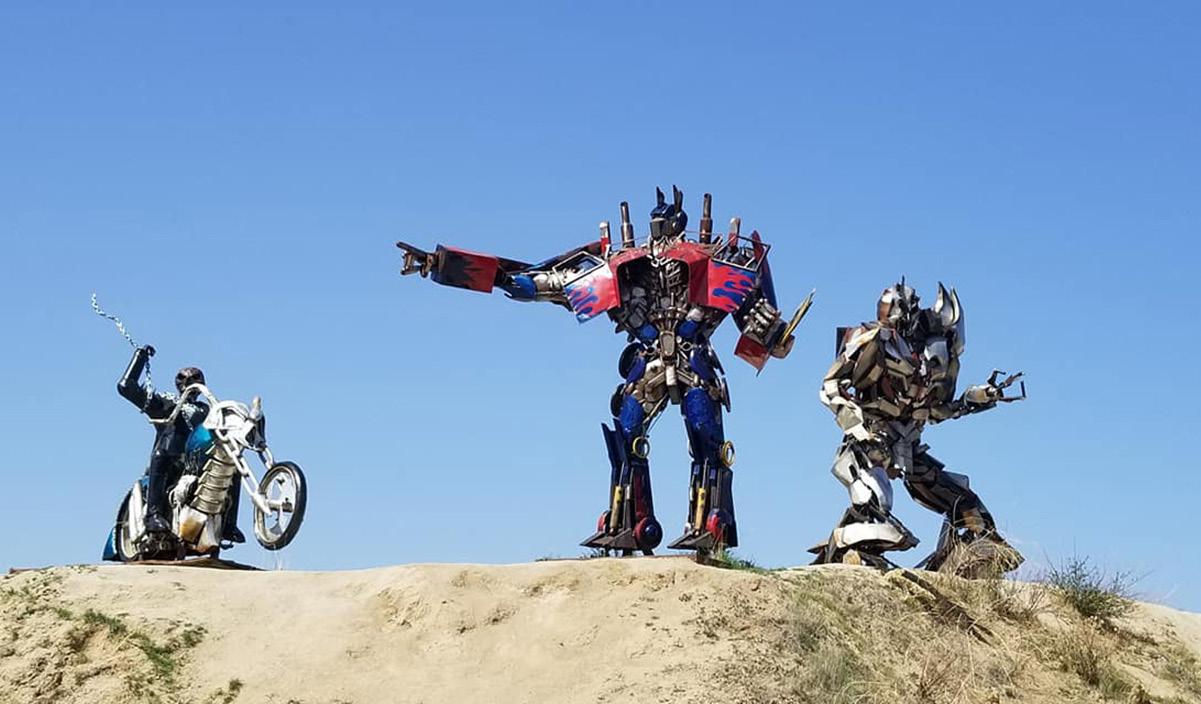
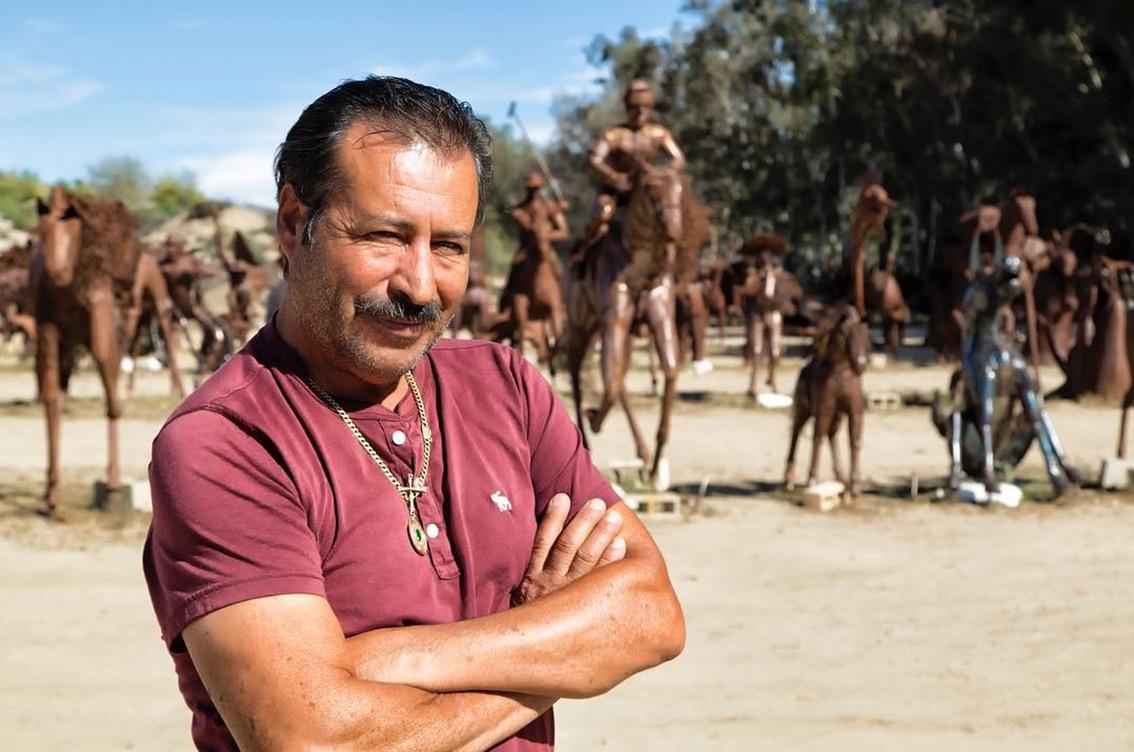
Advertisement
Man of Metal
Artist Ricardo Breceda traded in cowboy boots for a welder. Now, he nds inspiration in his Mexican roots and peace in the act of creating by fusion.
TEXT ELI DUPIN AND DAWN GARCIA
Born in Durango, Mexico, Ricardo Breceda grew up with parents who encouraged him to work hard and fi nd his passion, he and his eight siblings never lacked for anything. Inspired by their work ethic and ability to provide for him and his brothers and sisters, Breceda grew to learn you can do anything as long as you’re willing to work hard for it.
The rich cultural landscape of Mexico infused Breceda’s childhood. From art and artifacts to the stories unveiled in the multi-faceted cuisine of the country, his native land gave him many gifts. “Mexico is very vibrant when it comes to its culture. There are a lot of beautiful things about it that you can see, taste, and experience. I’ve always been inspired by it.”
With a population of nearly 700,000, the state of Durango is known for breathtaking waterfalls and carved wooden interiors. It’s also the home state of the famed rebel leader, Poncho Villa. Durango is rich in agriculture and its wood
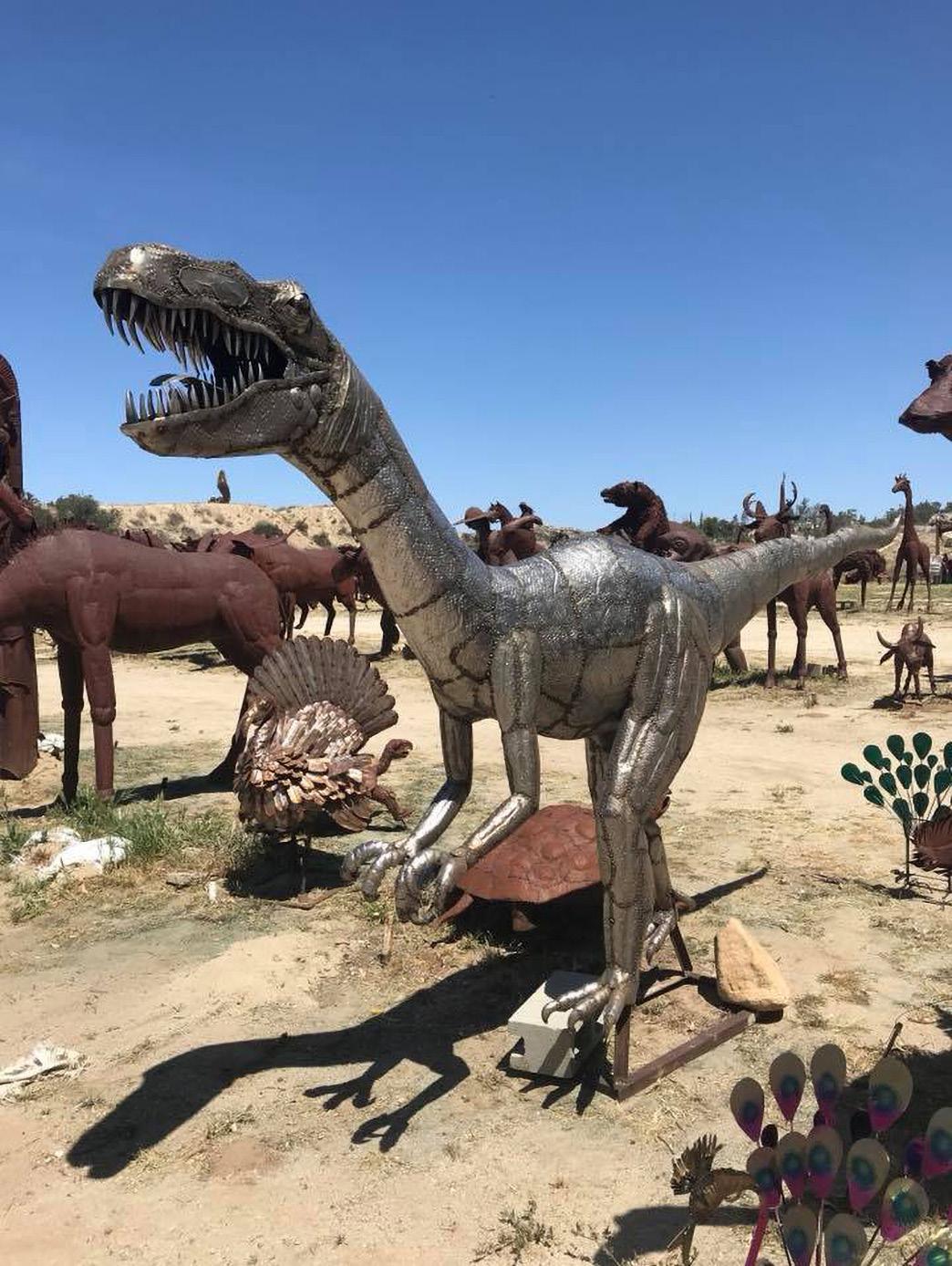
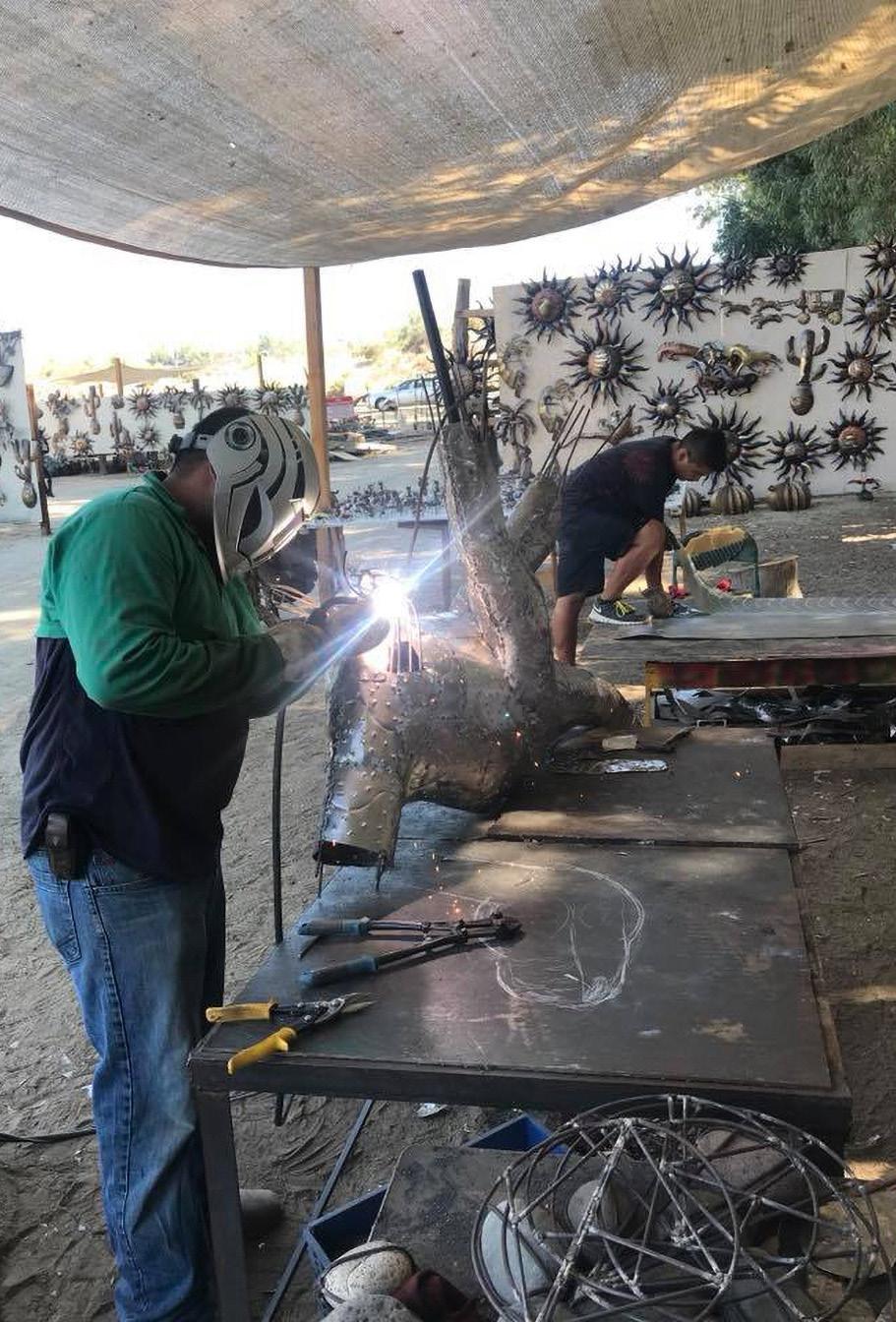
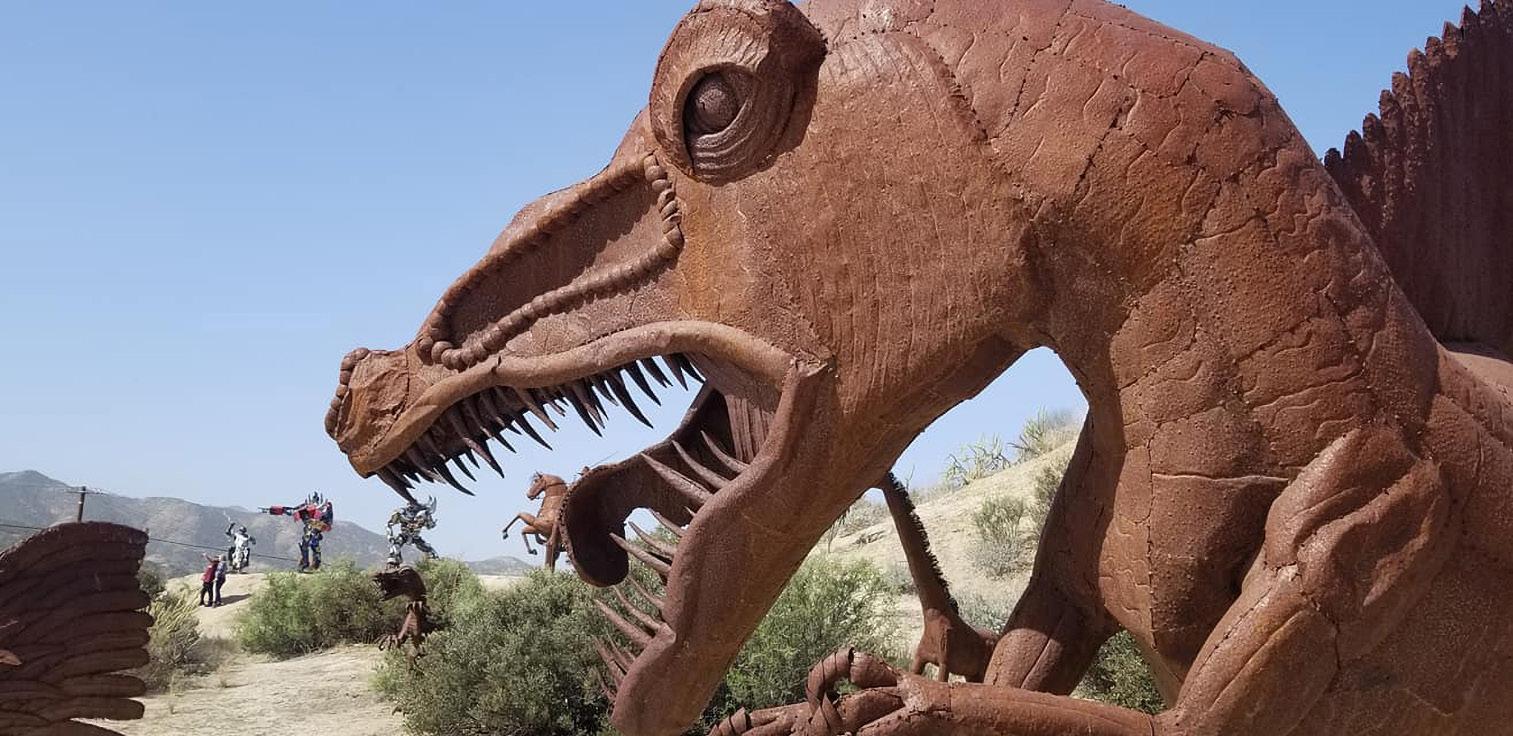
making, ranking among Mexico’s most prosperous economies.
Breceda’s fi rst career was a cowboy boots salesman. But after having his daughters Lianna and Arabi, his inner artist was awakened. When his then 6-year-old daughter Lianna asked him to make her a dinosaur, his life changed forever. That request was the catalyst that launched his life as a fulltime metal sculptor. He traded a pair of boots for a welding machine, and the rest is history. “The fi rst piece I made was 20feet tall and 45-feet long,” he says. “I made it for my daughter who at the time was fascinated by dinosaurs. This brought her so much joy and it brought joy to others who got a glimpse of it. That inspired me to do more.”
His Outdoor Haven
If you’ve driven across Southern California, you’ve spotted a sculpture or three along Highway 79 in Aguanda or in the Garden of Sculptures located in Temecula. Breceda is a skilled metal worker, but his eye for design, movement, character, and life-like creations are what makes his work so unique. A selftrained artist, he did have the benefi t of learning to weld from a friend, however in true alignment with his upbringing, from there he just kept doing it until it became second nature. He believes practice and hard work is why the fi nished pieces get better and better.
When asked about his fondness of animals— real, prehistoric and mythical alike—and how they ended up being the theme of his work, he adds, “I love nature and the outdoors. It helps my imagination wander and inspires me to create such pieces that refl ect my interpretation of what I see,” he says.

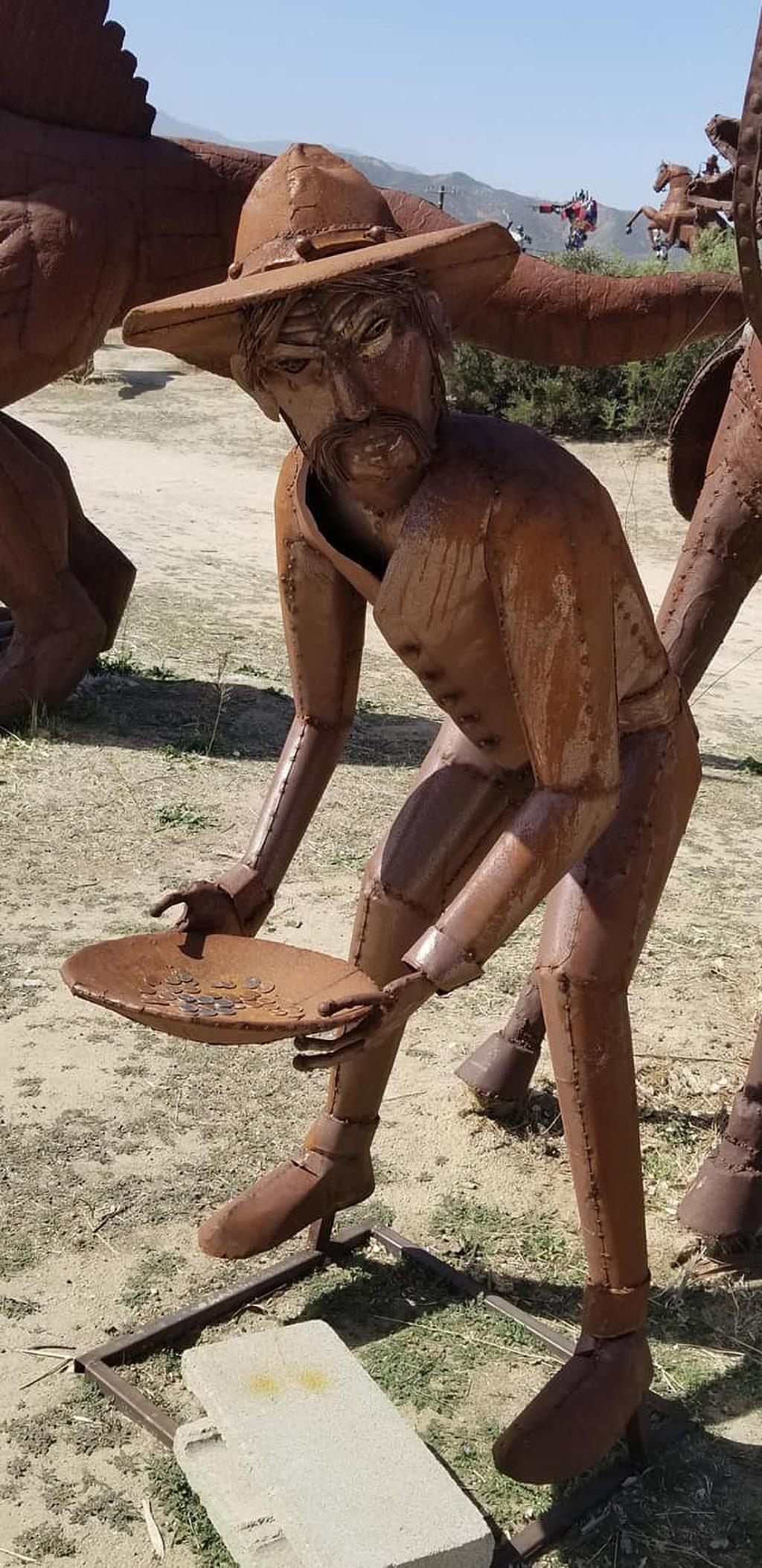
Breceda works with 26-gauge metal and round rod to create internal frames, and sometimes incorporates stones and scraps into his creations. He fi nds peace in the process of fusing metal together. “I get into my own world and get to create anything I like,” he says. “Some of it’s hard work but it’s very stress relieving. Plus, it puts a smile on people’s faces. That’s very rewarding.”
His work has opened the door to a bit of magic in Southern California, lending to the landscape a rather poignant view of life and what is just beyond our line of sight.
To schedule a viewing, visit him online at ricardobreceda.com, stop by to see him and the new sculpture park he’s building in Anguanga. If you want to commission him to create something exceptional and rare for you, all you have to do is send him a drawing and he will bring it to life.
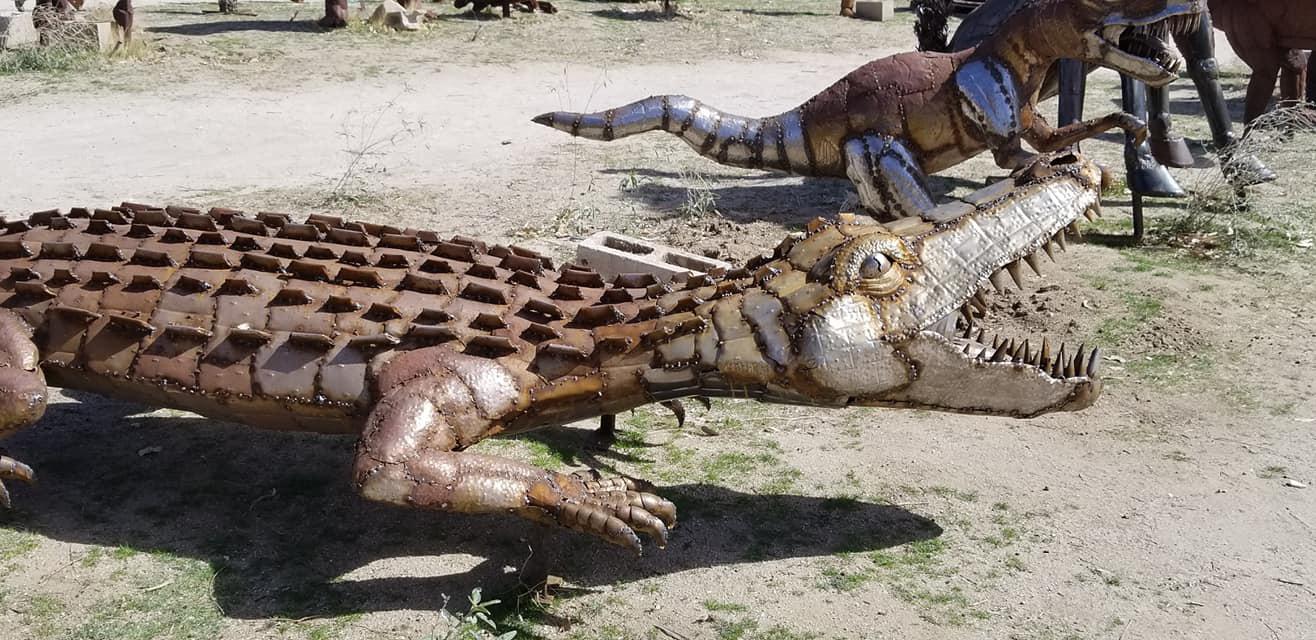
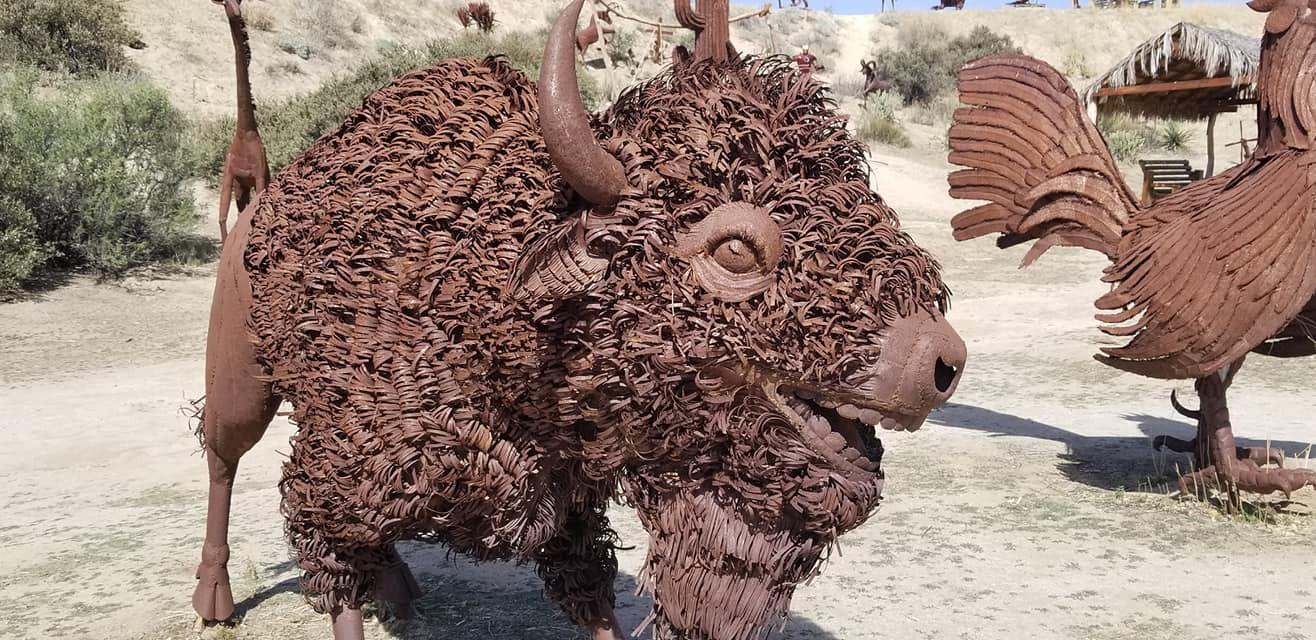

An artist Q + A What have been your greatest challenges as an artist?
Patience. Not being satisfi ed with my work. I always want or know I can do better.
Do you have moments where it’s time to pause, or do you just keep moving on a project?
Depending on what I’m working on. Sometimes it is necessary to take a break to either recharge or evaluate if I’m moving in the right direction with the work I’m doing.


WECO .BLUE
WECO can assist in establishing compliant bank accounts through strategic relationships.
From time sheet entry and invoice collection to direct deposit, WECO manages the process accurately and timely. WECO provides our clients a central location for employee management.
WECO manages workers compensation, unemployment claims, benefits and more.
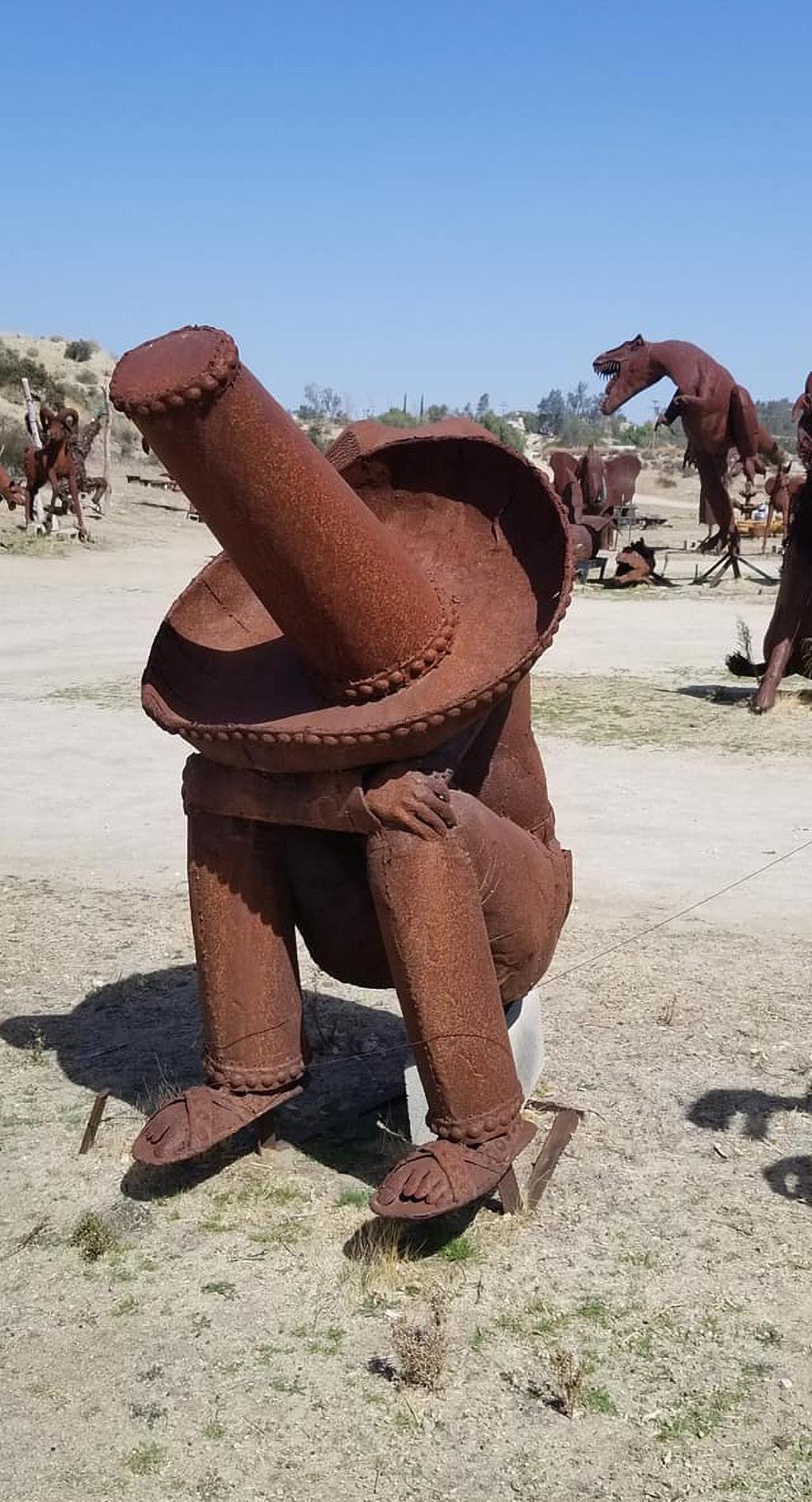
What are some of the things you love to do when you’re not creating (and when there’s not a pandemic!)?
I love to enjoy my family and friends.
If you could be in a room with any artist(s), who would you choose and why?
Sergio Bustamante. I’ve always been fascinated with his work. He’s a very prolifi c man and very creative. I would love to ask him many questions on how he begins creating and what brings him to imagine such amazing pieces.
What projects are you working on now?
I’m focused on creating a park in my city, Aguanga, so everyone can come enjoy the diversity of my art.
What is your dream place to see your work prominently displayed?
I want to create something bigger than my work in Borrego Springs in another country or another state.
There is an optimism in your pieces. Is that what you hope people remember?
Yes, I want people to remember the artist that put life and soul into his metal creations. And ultimately, I hope that people can fi nd joy in my work.
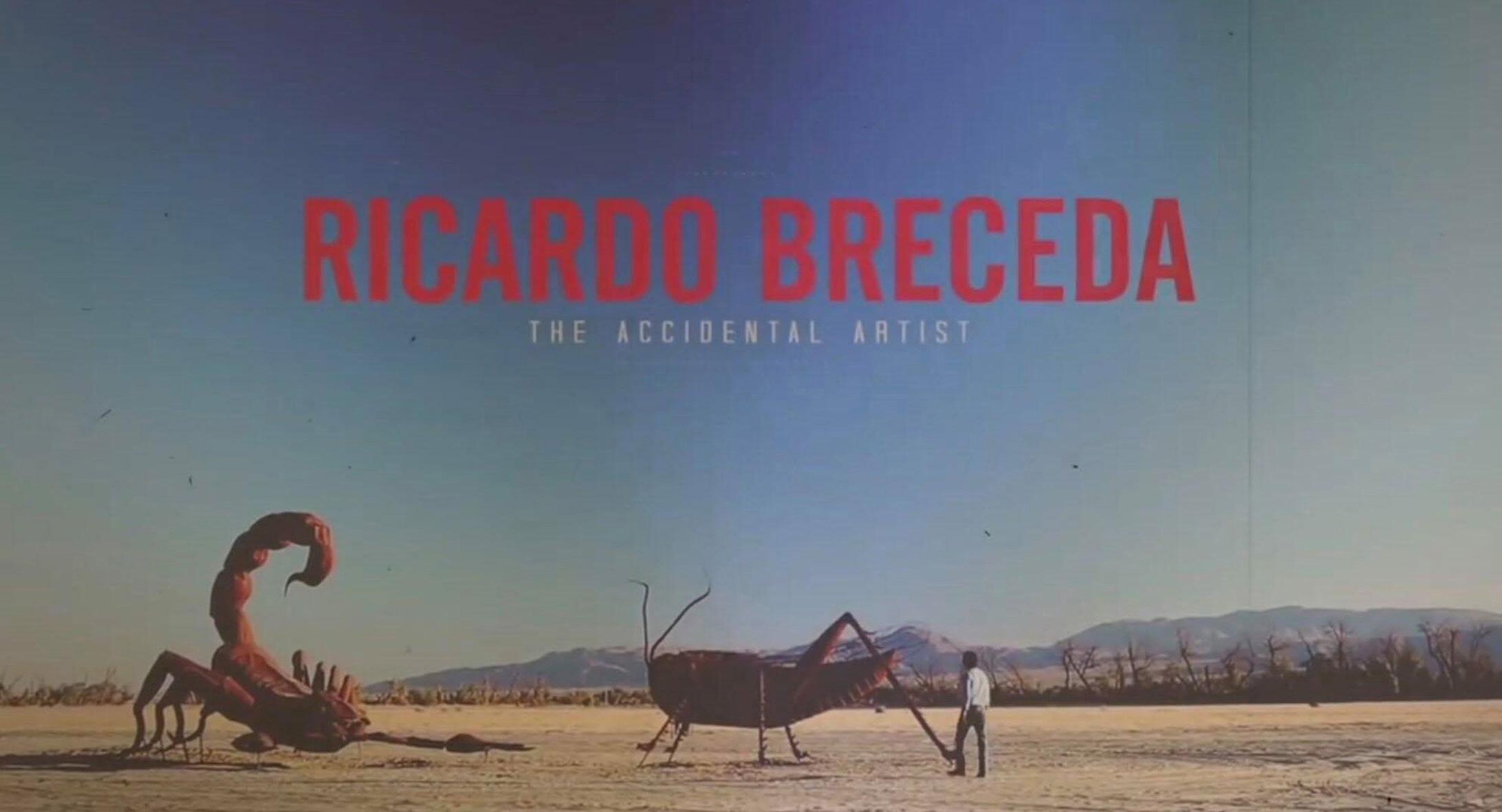
One-Hit Wonder
It doesn’t take much to revamp your mind. TEXT PETER KRAY
The one-hit wonder. In the world of popular music, it’s a somewhat dismissive term. It’s a slight to the bands and artists who enjoyed one hugely successful song (think “MMMbop,” “Walking on Sunshine,” or “867-5309/Jenny”), then more or less disappeared into showbiz oblivion.
Personally, I would rather have one hit instead of none. And I often can. That’s because at my house, the term “one-hit wonder” is shorthand for the cannabis cocktail hour, when, sometime around 5 or 6 p.m., I smoke one hit and instantly leave all the Zoom calls, texts, emails, pop-up schedules, news alerts and noise of the day behind.
It’s an incredibly liberating feeling. Opening the doors in my head to new ideas, suddenly solving problems to things that just an hour earlier I thought I might never quite fi gure out, thinking of how I really might fi nish writing a new book—The Ghost Hotel—this fall, or just kicking the soccer ball for my big dog, Moses, while I move the backyard hose around.
The concept of the onehit wonder is something I discovered researching my fi rst book, The Monster, a kind of allegory about how we might take control of the ways we confront the monsters in our personal lives—whether they be disease, mental strife, addiction, or alcoholism—by “turning a light on.”
During my research, I met a rolfer who was instrumental in helping my wife and I on the path to better health. Once, after a particularly therapeutic session, I asked him how he managed the cycle of processing all of the hurt he was healing. Or, in other words, how he made sure he wasn’t holding onto other peoples’ shit.
He said, “Every night when I get home, before I walk in the house, I smoke one hit then go hold on to an iron rod in my courtyard until I feel like it’s all gone. Then I can go be with my family for the evening.”
“One hit?” I said. “That doesn’t seem near enough for all the problems you’re solving.”
But he was already back to focusing on my health— in particular, a lingering knee injury he thought was exacerbated by my reluctance to release my grief over the recent death of my dog Tobear, a barrel-chested, willful, very funny Malamute-Labrador mix we had nicknamed, “The Mighty Burrito.” The rolfer said, “You need to stop looking at your feet so much when you walk. Look where you’re going. Look at the horizon.”
Which is something I still think about when I go for a long walk. Albeit the one-hit thing is what I think about the most. At the time I was writing that book, it slowly dawned on me that I was also writing it to help myself.
It was a period in my life when I wasn’t satisfi ed with just one of much of anything. And cannabis—along with good beer, bourbon, and crisp reposado—was key to treating every day as part of some extremely casual long-working weekend, something Ernest Hemingway called, “the fi esta concept of life” in his fi nal—and I think fi nest— book, A Moveable Feast.
The beauty of getting back to one sublime moment or lasting sensation, one perfect pint of cold IPA, one fi ne glass of pinot noir with fresh pasta, or one fragrant inhale of the sweet leaf to remember the magic of each day was still a couple years down the tracks.
It’s the savoring of things, and sometimes the scarcity, that gives them meaning. It’s by being in the moment that you heighten the pleasure and increase the memory of each event. And it’s so much more enjoyable than the monotony of gluttony—of having so much of something that the only remarkable aspect is of how much you can cram in your garage or stuff in your mouth.
You know that feeling you get when you fi rst hear a song that you know you will love forever, and every time you play it again, it takes you back to the fi rst time you heard it? That’s what I’m talking about.
I read once that when Brian Wilson, the Beach Boys founder and architect of the California surf sound, fi rst heard The Ronettes classic wall of sound masterpiece, “Be My Baby,” he had to pull over to the side of the road because it impacted him so much. In 2013 he told The New York Times, “In a way it wasn’t like having your mind blown, it was like having your mind revamped.”
That’s the way I feel when I enjoy my one hit at the end of the day. Then I walk out onto my patio to look at the big, blue beautiful world, as I smile and wonder about it all.
ABOUT THE AUTHOR Peter Kray is the author of The God of Skiing. The book has been called “the greatest ski novel of all time.” Buy it here: amzn.to/2lmzpvn
ABOUT THE AUTHOR Mona Van Joseph is a professionally licensed intuitive reader in Las Vegas since 2002. Author, radio host, and columnist, she created the Dice Wisdom app and is available for phone and in-person sessions. mona.vegas
MAY HOROSCOPE
What do the stars hold for you?
TEXT MONA VAN JOSEPH
APR. 20-MAY 20 TAURUS
It’s time to accept that what you bring to the world is about to be acknowledged and appreciated. Be brave. Present your amazing ideas, and they will fall on the right ears. Embrace the challenge.
MAY 21-JUNE 20 GEMINI
Cooperation is the word of the month. Get people to agree, sign, and commit without undervaluing you and how you can help them. Agree only to total commitment without compromise this month.
JUNE 21-JULY 22 CANCER
Many good choices will present themselves this month. You will be one of the people to be called back because of your skills, patience, and experience. Cooperate with the right people, and doors will open.
JULY 23-AUG. 22 LEO
There’s a stepping stone that’s either an opportunity to teach you what you don’t know or bring you to that next level in your career or love life. Either way, you will be introduced to the A list.
AUG. 23-SEPT. 22 VIRGO
May is not the action month for you to prove your meddle; it’s the month to be prepared for what happens in June. Gratitude goes a long way. Step into that awesome spotlight this month.
SEPT. 23-OCT. 22 LIBRA
You have been more productive in the last three months than most people—and it shows through the excellence and experience of your new skills. You’ve discovered the thing that works for you. Now you get to move forward.
OCT. 23-NOV. 21 SCORPIO
Things are lining up for you to be very speci c with your means to end goals. It might be time to think about where your skills would translate into a di erent industry. The universe is ready for you.
NOV. 22-DEC. 21 SAGITTARIUS
You’ve just been rewarded by information previously withheld from you. Get very clear on what you really want and be ready for an opportunity to present itself in July. Patience has served you well.
DEC. 22-JAN. 19 CAPRICORN
It’s time to allow something a little more creative into your life. It could be as simple as investigating things for others because they don’t have the time or playing bass guitar on call for local bands. Make sure it’s joyful.
JAN. 20-FEB. 18 AQUARIUS
You have incredibly high standards for yourself, and sometimes those standards fall over to the people around you. Start by recognizing the people who are good and kind to you without asking you for anything.
FEB. 19-MAR. 20 PISCES
Be the queen or king of cooperation this month. Your new beginning will present itself; you will be noticed for what you may do. Right now, be as helpful as you can without gagging at the political circus around you.
MAR. 21-APR. 19 ARIES
Communication is essential this month. Update your connections on social media and align with the people who represent your future, not your past. What you begin in May will ourish in July.
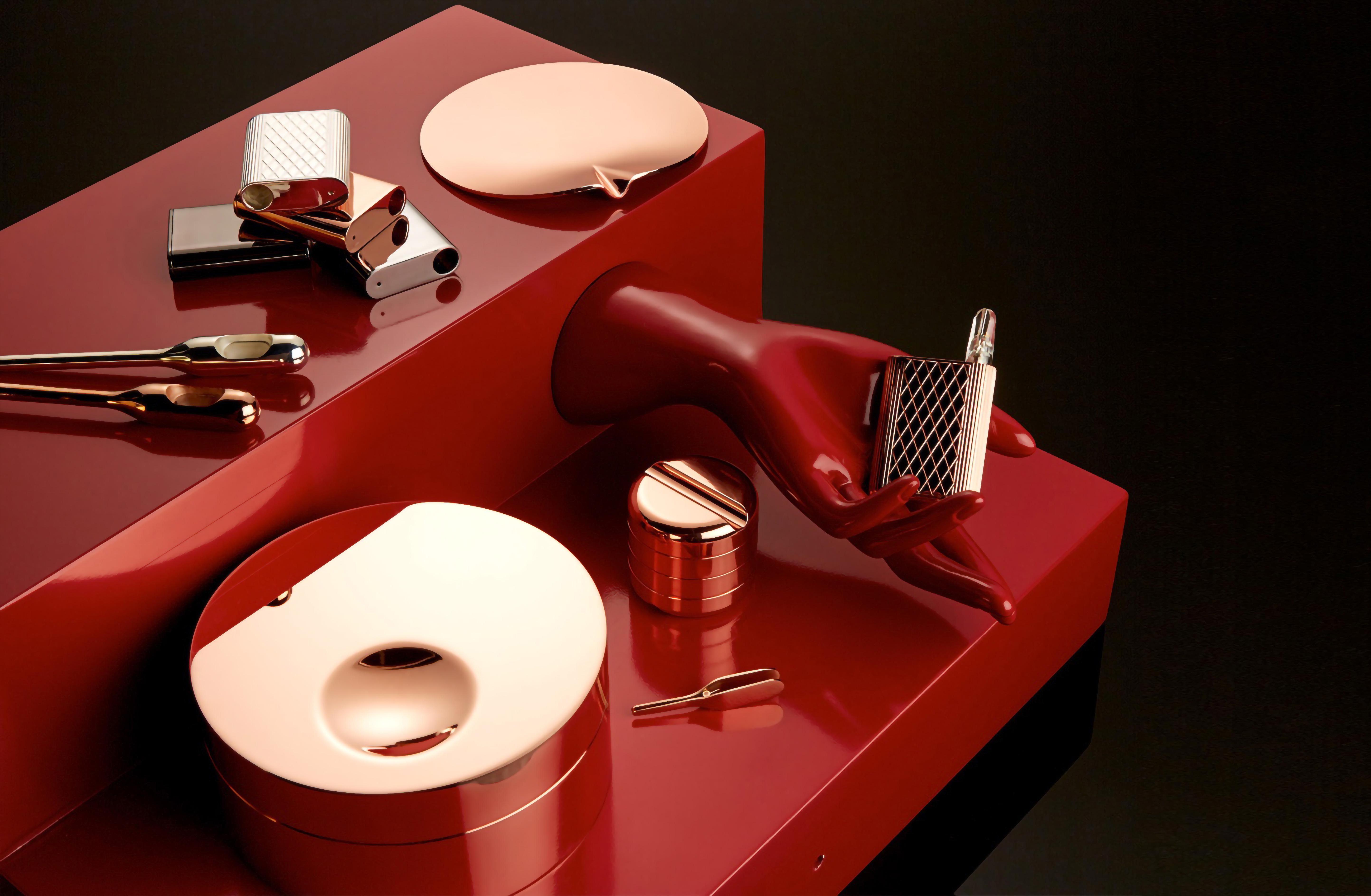
HIGH MIND AT EASE
Fashion designer Armen Gregorian brings some je ne sais quoi to the cannabis industry in his new, chic brand MAE.
TEXT DAWN GARCIA PHOTOGRAPHY COURTESY OF MAE

When it comes to image, the cannabis space is in constant evolution. A brand that is luxurious, approachable, lifestyle-centric and chic is the goal for which so many brands strive. High-end brand MAE fi ts in fl awlessly—because it started on the runway.
Launched by fashion designer Armen Gregorian, founder of former fashion label Twelfth Street by Cynthia Vincent, MAE stands for Mind at Ease. Inspired by his daughter, a love of sophisticated design, and that peaceful cannabis vibe, MAE off ers product that’s understated, elegant, and incredibly discreet. The high-end design comes thanks, in part, to the brilliance of the renowned Joe Doucet, known for elevated design and luxurious materials. Any cannabis connoisseur who loves fi ne things will fall instantly in love.
A bold statement hits you the moment MAE product arrives. The box looks like what one may expect from a brand such as Tiff any’s only instead of Tiffany blue, it’s a deep, rich MAE red. It’s the contents of that box, however, that will captivate any true lover of fashion and design. A red sculpted hand holds MAE’s patented product, The Palm, which is compatible with all 510 cartridges and burns through an entire half gram cartridge with a single charge (standard miniUSB charging cable included). Sift through the contents of the box and you will be grateful MAE has put this much eff ort into making cannabis not just elevated, but glamorous.
All of MAE’s products—a sleek ashtray, a multi-tiered grinder,
MAE OFFERS A PRODUCT THAT'S UNDERSTATED, ELEGANT, AND INCREDIBLY DISCREET. THIS IS THE DIRECTION CANNABIS SHOULD BE HEADING.

the subtle CBD Cartridge Zero, the Puff bar necklace, a pipe with a simple, unique fi lter made so linear and simply—are refi ned enough to be submerged into your best high-end handbag or even the pocket of your favorite pants. This is the direction cannabis should be heading.
The messaging of MAE exudes the je ne sais quoi so often found on the runways of Paris, New York, and Barcelona. The brand is open to the industry in a way so many can relate to—through personal experiences with the plant. Bringing the element of high-end fashion to a burgeoning cannabis industry and implementing Gregorian’s personal experiences and expertise over the span of his career simply means a beautiful new world is born. And MAE is a beautiful new product indeed.
Sensi had the opportunity to interview MAE’s founder Armen Gregorian to get the story behind the man and the brand.
What prompted your desire to enter the cannabis space?
From 1975 to 1979, I was an avid supporter and user of Mary Jane, as many were at that time. Looking back fondly at that era, I always think of the icons Bob Marley and Jimi Hendrix, which gives me a sense of nostalgia. As I got older, I transitioned into being a wine drinker—to which my daughter suggested I try cannabis instead. After trying a bit of today’s fl ower, I couldn’t believe how much it had changed from the 70s. This sparked the creation of MAE.
Because of the green rush in the U.S. market, we are seeing more and more gatekeepers in the fashion world include cannabis in their latest collections. Coming from a fashion background, I’m aware that it will always refl ect what is happening in our culture and society. The fact that cannabis was becoming somewhat trendy and infl uential in other markets like fashion intrigued me and I wanted to expand on it.
MAE is as fashion-forward and sleek as a cannabis product can get. What was the thought process behind the brand development?
After copious amounts of research both in-person and online, I found that the accessories department of cannabis was lacking. Subsequently, looking at the enormous success of Beboe’s products, I knew that there was a market of luxurious cannabis users. Combining cannabis, something society has deemed inherently bad for years, with the feeling of luxury and sleekness has the ability to evolve the sentiment around cannabis completely.
Additionally, Joe Doucet’s sleek design concepts create a luxurious feel and that’s exactly what I wanted for MAE. He is a prolifi c designer with deep-rooted experience working with big name brands like Mont Blanc, Nike, and BMW. I knew that if I was going to bring world-class cannabis accessories into the market, I had to enlist the right person to design them.
—Armen Gregorian
Tell me about the color red and what it means to you as a designer, cannabis enthusiast, and marketer?
What I love about the color red is
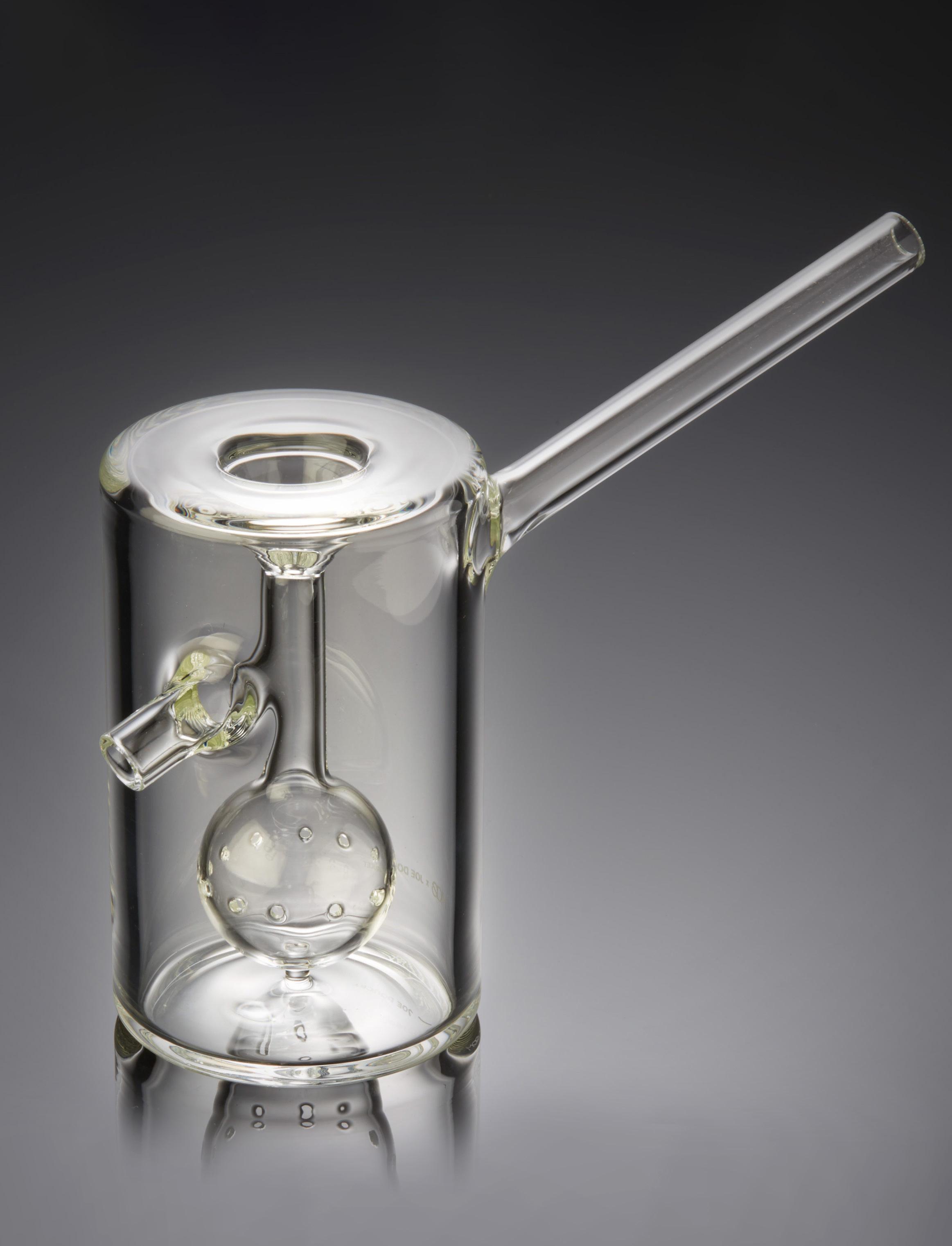

that it carries so many diff erent sentiments. I wanted to carry its diverse range into MAE. MAE is for everyone, whether you are the cannabis connoisseur, a fi rst-timer, or even skeptical about the industry. Just like red is for emotions, I wanted MAE to be for cannabis users.
What inspired the water pipe design and fi ltration system? (It’s amazing)
I wanted to design the best pipe on the market, something that would get the job done well but was beautiful in design—and discreet. The transparent glass gave it that elegant look factor.
How did you develop the grinder?
We developed the grinder in our partnership with Joe Doucet. As a team, we wanted to create all of our products to be beautiful yet discreet. The amazing duality of MAE’s grinder is that it can be left on your coff ee table to fi t seamlessly into the design of your home but also get the job done right.
—Armen Gregorian
Along with the message of “Mind At Ease,” is there a little Mae West inspiration in terms of that old Hollywood nostalgia for elegance and distinguished style?
I often look back on my memories of Mary Jane with a great sense of nostalgia. I wanted everyone to feel that way, while also having that extra sense of luxury. Old Hollywood exudes elegance and class, which is incorporated in Mae’s overall brand and collaboration with Joe Doucet.
What mark do you hope MAE makes in the industry?
I’m hoping people will be drawn to MAE’s luxurious feel and specially-crafted products, take a chance on the industry, and change the perception around cannabis. I want Mae’s consumers to be proud of the products they buy and show them off , rather than stash them away in a drawer somewhere.
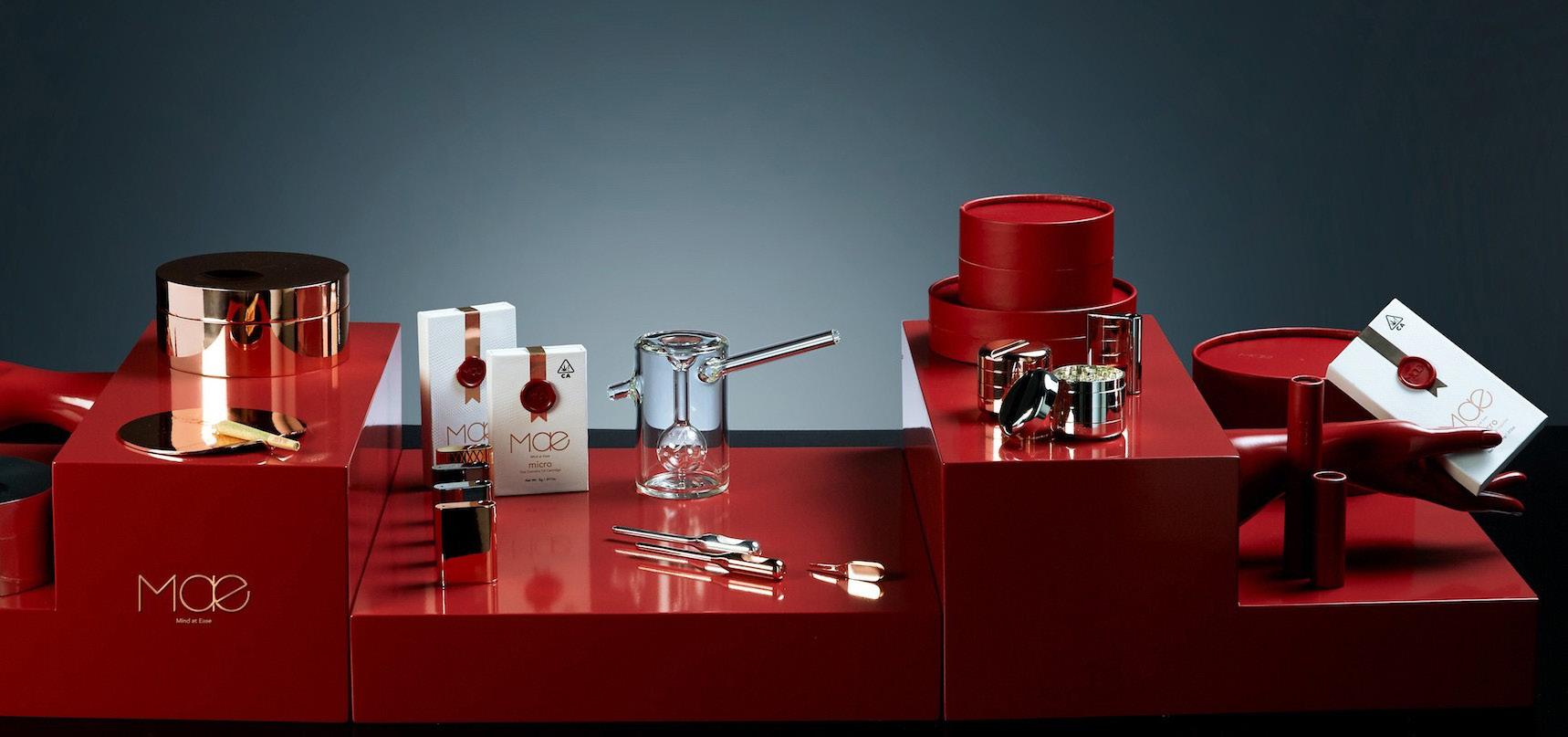
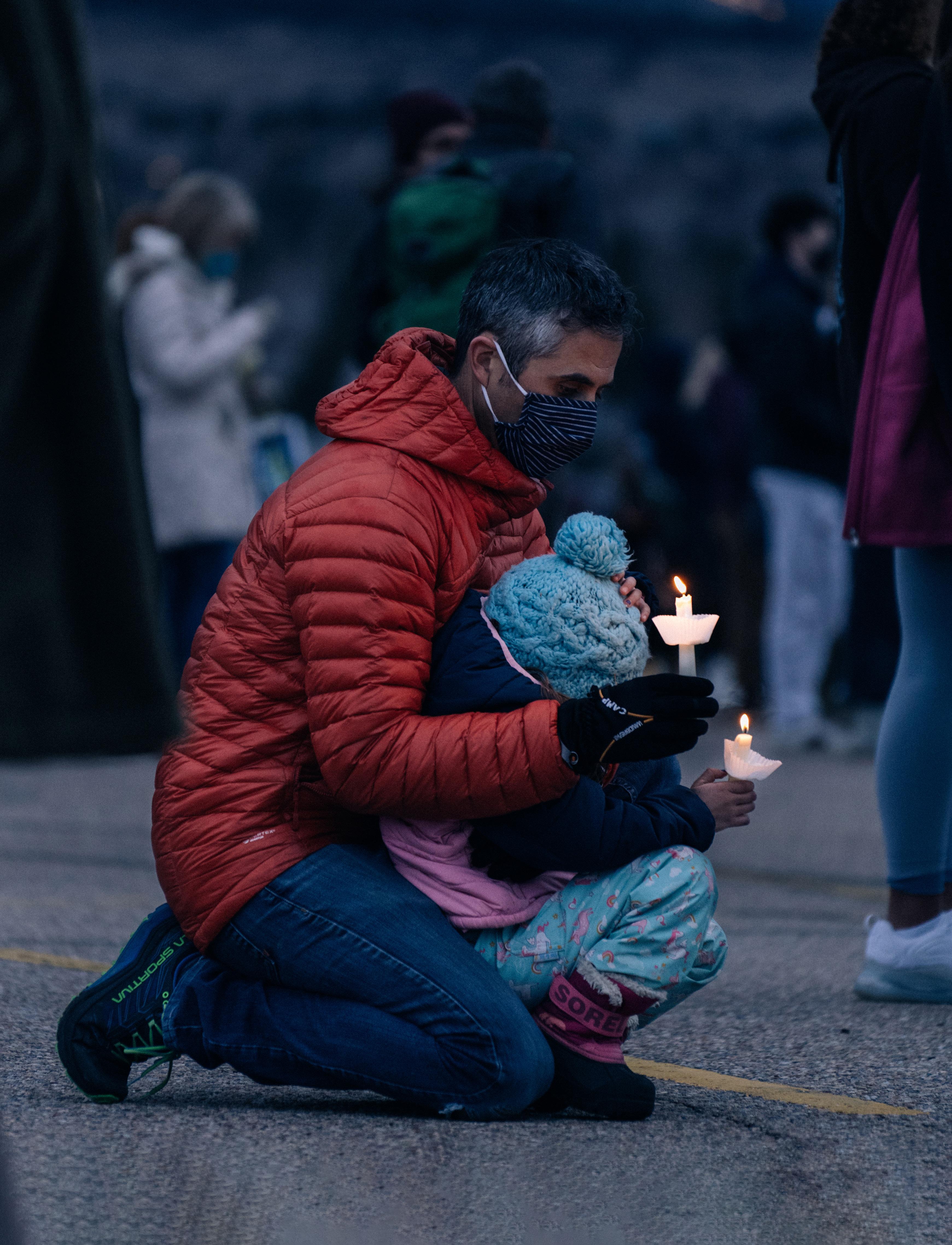
SANTEE, CALIFORNIA. GRUNDY, VIRGINIA. MADISON, MONTANA. MERIDIAN, MISSISSIPPI. METEOR, WISCONSIN. COLUMBOS, OHIO. BROOKFIELD, WISCONSIN. RED LAKE, MINNESOTA. TACOMA, WASHINGTON. GOLETA, CALIFORNIA. BART TOWNSHIP, PENNSYLVANIA. SALT LAKE CITY, UTAH. BLACKSBURG, VIRGINIA. CRANDON, WISCONSIN. OMAHA, NEBRASKA. ARVADA, COLORADO. TINLEY PARK, ILLINOIS. KIRKWOOD, MISSOURI. DEKALB, ILLINOIS. SKAGIT, WASHINGTON. COVINA, CLIFORNIA. GENEVA AND SAMSON, ALABAMA. CARTHAGE, NORTH CAROLINA. BINGHAMTON, NEW YORK. COLLIER TOWNSHIP, PENNSYLVANIA. FORT HOOD, TEXAS. SAIPAN, NORTHERN MARIANA ISLANDS. ST. LOUIS, MISSOURI. APPOMATTOX, VIRGINIA. HUNTSVILLE, ALABAMA. LAS CRUCES, NEW MEXICO. MANCHESTER, CONNECTICUT. TUSCON, ARIZONA. GRAND RAPIDS, MICHIGAN. COPLEY TOWNSHIP, OHIO. CARSON CITY, NEVADA. SEAL BEACH, CALIFORNIA. IRWINDALE, CALIFORNIA. CHARDON, OHIO. OAKLAND, CALIFORNIA. SEATTLE, WASHINGTON. AURORA, COLORADO. OAK CREEK, WISCONSIN. COLLEGE STATION, TEXAS. NEW YORK, NEW YORK. MINNEAPOLIS, MINNESOTA. BROOKFIELD, WISCONSIN. CLACKAMAS, OREGON. NEWTOWN, CONNECTICUT. WEBSTER, NEW YORK. SOUTH VALLEY, NEW MEXICO. SANTA MONICA, CALIFORNIA. HIALEAH, FLORIDA. SAYLORSBURG, PENNSYLVANIA. WASHINGTON, D.C. FORT HOOD, TEXAS. ISLA VISTA, CALIFORNIA. SPRING, TEXAS. MARYSVILLE, WASHINGTON. PORTLAND, OREGON. MONTGOMERY, PENNSYLVANIA. TYRONE, MISSOURI. WACO, TEXAS. CHARLESTON, SOUTH CAROLINA. CHATTANOOGA, TENNESSEE. LAFAYETTE, LOUISIANA. HARRIS, TEXAS. MONETA, VIRGINIA. ROSEBURG, OREGON. How do you move forward when the American Nightmare comes to your town? COLORADO SPRINGS, COLORADO. SAN BERNADINO, CALIFORNIA. KALAMAZOO, MICHIGAN. HESSTON AND NEWTON, KANSAS. KANSAS CITY, KANSAS. WILKINSBURG, PENNSYLVANIA. PIKE, OHIO. BELTSVILLE AND BETHESDA, MARYLAND. ORLANDO, FLORIDA. DALLAS, TEXAS. It happened here. ST. JOSEPH, MICHIGAN. BATON ROUGE, LOUISIANA. MUKLITEO, WASHINGTON. CITRONELLE, ALABAMA. BURLINGTON, WASHINGTON. TOWNVILLE, SOUTH CAROLINA. BROWARD, FLORTEXT ROBYN GRIGGS LAWRENCE PHOTOS ELLIOT WHITEHEAD IDA. SCHOFIELD AND ROTHSCHILD, WISCONSIN. CINCINATI, OHIO. FRESNO, CALIFORNIA. KIRKERSVILLE, OHIO. LINCOLN, MISSISSIPPI. SANDY, UTAH. EATON TOWNSHIP, PENNSYLVANIA. ALEXANDRIA, VIRGINIA. SAN FRANCISCO, CALIFORNIA. LITTLE ROCK, ARKANSAS. CLOVIS, NEW MEXICO. PLANO, TEXAS. ANTIOCH, TENNESSEE. LAS VEGAS, NEVADA. SUTHERLAND SPRINGS, TEXAS. TEHAMA, CALIFORNIA. AZTEC, NEW MEXICO. HIGHLANDS RANCH, COLORADO. BENTON, KENTUCKY. MELCROFT, PENNSYLVANIA. PARKLAND, FLORIDA. YOUNTVILLE, CALIFORNIA. SAN BRUNO, CALIFORNIA. NASHVILLE, TENNESSEE. SANTA FE, TEXAS. SCOTSDALE, ARIZONA. TRENTON, NEW JERSEY. ANNAPOLIS, MARYLAND. JACKSONVILLE, FLORIDA. ABERDEEN, MARYLAND. FLORENCE, SOUTH CAROLINA. TALLAHASSEE, FLORIDA. THOUSAND OAKS, CALIFORNIA. ROBBINS, ILLINOIS. CHICAGO, ILLINOIS. SEBRING, FLORIDA. ASCENSION AND LIVINGSTON, LOUISIANA. AURORA, ILLINOIS. POWAY, CALIFORNIA. CHARLOTTE, NORTH CAROLINA. HIGHLANDS RANCH, COLORADO. VIRGINIA BEACH, VIRGINIA. GILROY, CALIFORNIA. EL PASO, TEXAS. DAYTON, OHIO. MIDLAND-ODESSA, TEXAS. SAN JUAN, PUERTO RICO. ORINDA, CALIFORNIA. SANTA CLARITA, CALIFORNIA. MIRAMAR, FLORIDA. PENSACOLA, FLORIDA. JERSEY CITY, NEW JERSEY. WHITE SETTLEMENT, TEXAS. GRANTSVILLE, UTAH. MILWAUKEE, WISCONSIN. ROCHESTER, NEW YORK. WAUWATOSA, WISCONSIN. ROCKFORD, ILLINOIS. SUNRISE, FLORIDA. MUSKOGEE, OKLAHOMA. BUFFALO, MINNESOTA. ATLANTA, GEORGIA. BOULDER, MAY 2021 SENSIMAG.COM 39 COLORADO. ORANGE, CALIFORNIA. ROCK HILL, SOUTH CAROLINA. INDIAPOLIS, INDIANA.

Iwas struggling to write an article about a breakup with my yoga studio when my daughter called to tell me there was an active shooter at the neighborhood grocery store that we have frequented almost daily for 25 years. I abandoned the prose (which no longer mattered) and hopped online to learn what I could from live news reports and social media.
It got worse and worse. I stumbled on a live video, then switched it off when I saw bodies. We heard rumors of six people dead. Then the offi cial report: 10 humans gunned down, some as they were bagging groceries and helping customers navigate the self-checkout system (as they had so many times for me).
I told my kids to be prepared because surely, we would know at least one victim. We did.
WHAT WAS LOST Teri Leiker was a fi xture at our King Soopers, and she made a diff erence in my life. She was always smiling, visibly happy about making sure my groceries were bagged properly. We made small talk. When I was crabby (admittedly too often), she tried to cheer me up. I could measure the depth of my bad mood by whether she was successful or not. She usually was, at least briefl y.
When you go to a place for 25 years, the people there become like family. Teri wasn’t the only worker at the Table Mesa King Soopers who seemed to love her job. I used to joke that the workers there never quit and never aged. I didn’t realize, of course, that we were all aging together, as oblivious to the wrinkles and gray hairs on each other as we were to our own.
I mostly hated the time I spent at King Soopers, to be honest. When I was a working mom, Sunday afternoon meant piling my cart high with carefully planned and selected food to feed my family all week. It was the fi rst place each of my kids rode their bikes to without me or their father to accompany them (and I was a nervous wreck both times). When they went off to college, I wandered the store aimlessly, completely perplexed about how to feed only myself and trying to fi gure out what single people eat. I imagined myself spending purgatory pushing a cart through those aisles, indecisive and
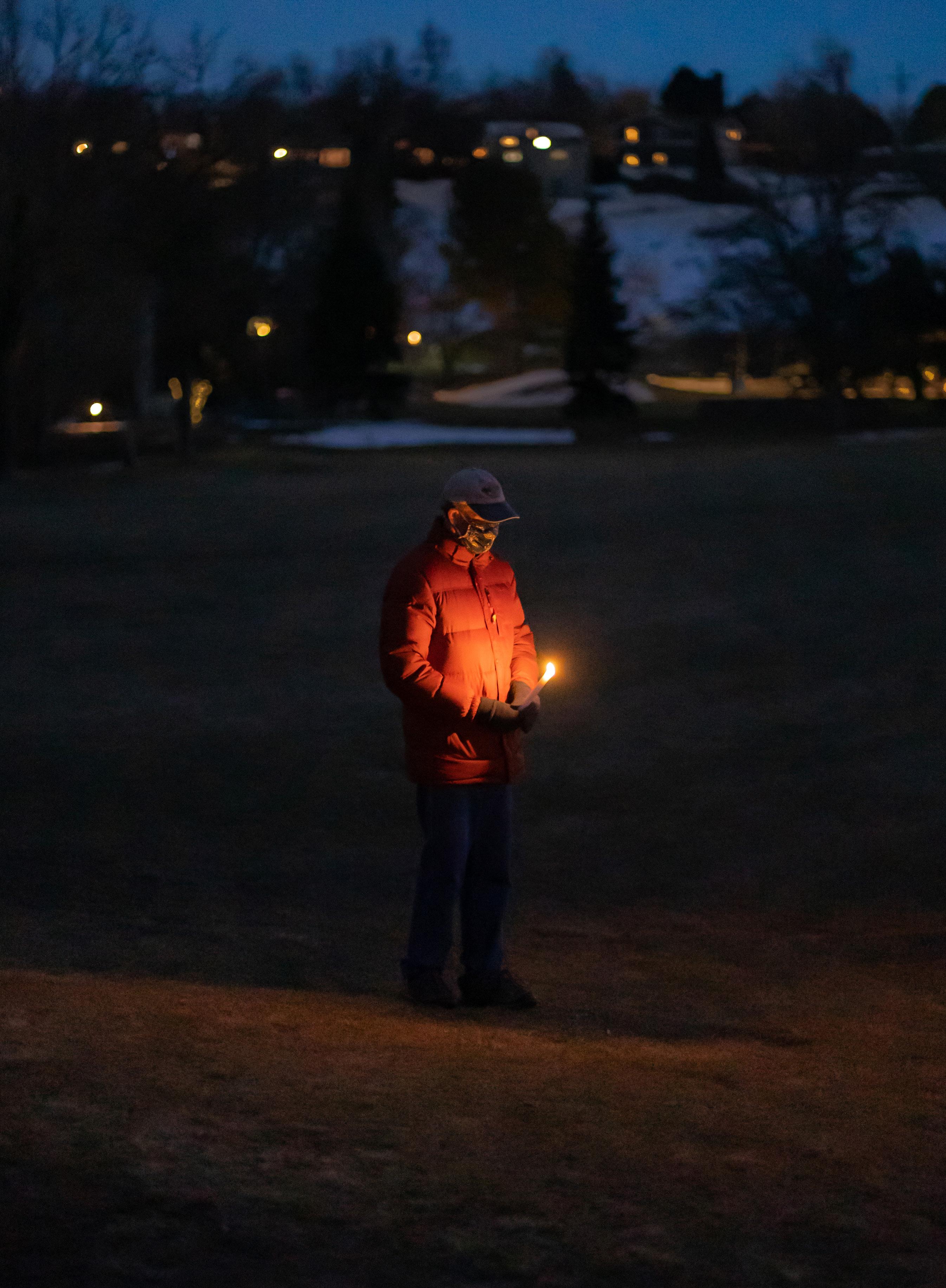

desperate for sustenance, buying Chef Boyardee Beefaroni because it was there and reminded me of my childhood.
THOUGHTS AND PRAYERS But this isn’t about me. It’s not about any of us who rush to publish when tragedy strikes. I was annoyed, at fi rst, that so many of my friends posted on social media about their relationship to the store, how many times they’d frequented it, how it could have been them or their loved ones. This isn’t about you, I wanted to say, because sometimes I try to bury my sorrow in unjustifi ed righteousness (and it never helps).
It’s about all of us, of course. My community is suff ering shock and grief after this shit that plagues our country—the shit that could never happen here—came to our town. We don’t know what to do with our personal grief, our broken connections. Some fi nd comfort in comments full of prayers and heart emojis. Others will join physical vigils, some more political than others, and fi nd solace in the solidarity. I’m going to one tonight because I can’t be the person who grieves alone—not for this one.
We will light candles and cry and probably hug (even though we’re not supposed to). We will honor 10 dead souls, and we’ll promise never to forget. We’ll debate gun control and maybe talk a bit about mental health, post more thoughts and prayers and emojis. Then we’ll do nothing again and watch in horror as history repeats.
And when it does, at a shopping mall or a school or on a random street in the next town that will be forever remembered by a massacre, people like me will rush to put words to the unspeakable and off er up their affi liation with the scene of the crime as a reminder that this could happen anywhere.
The shock. The grief. The words that make no diff erence. This is life in America.




